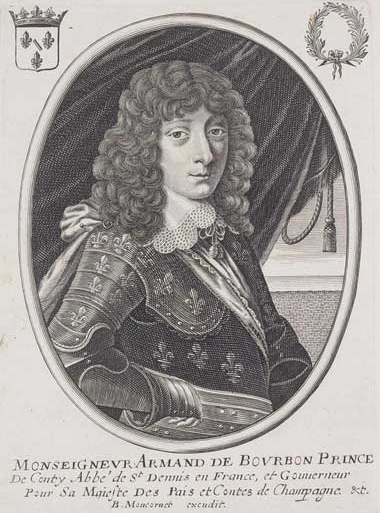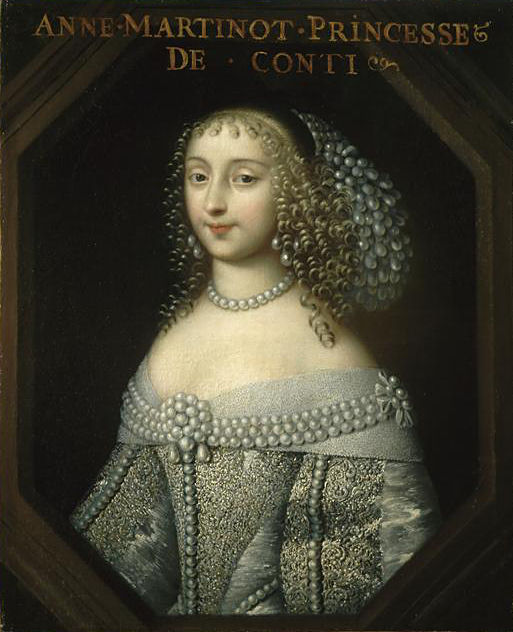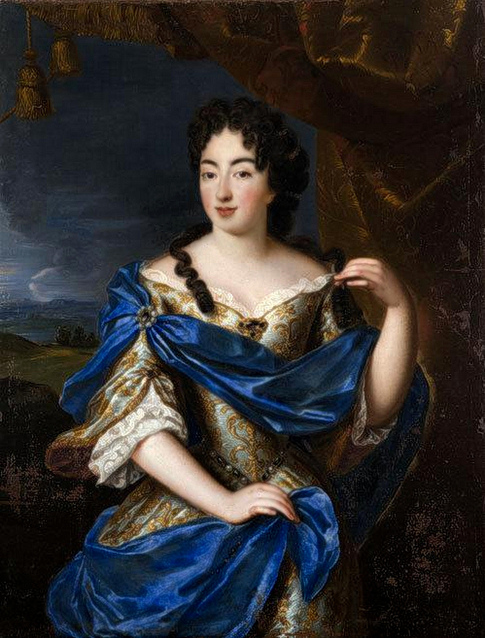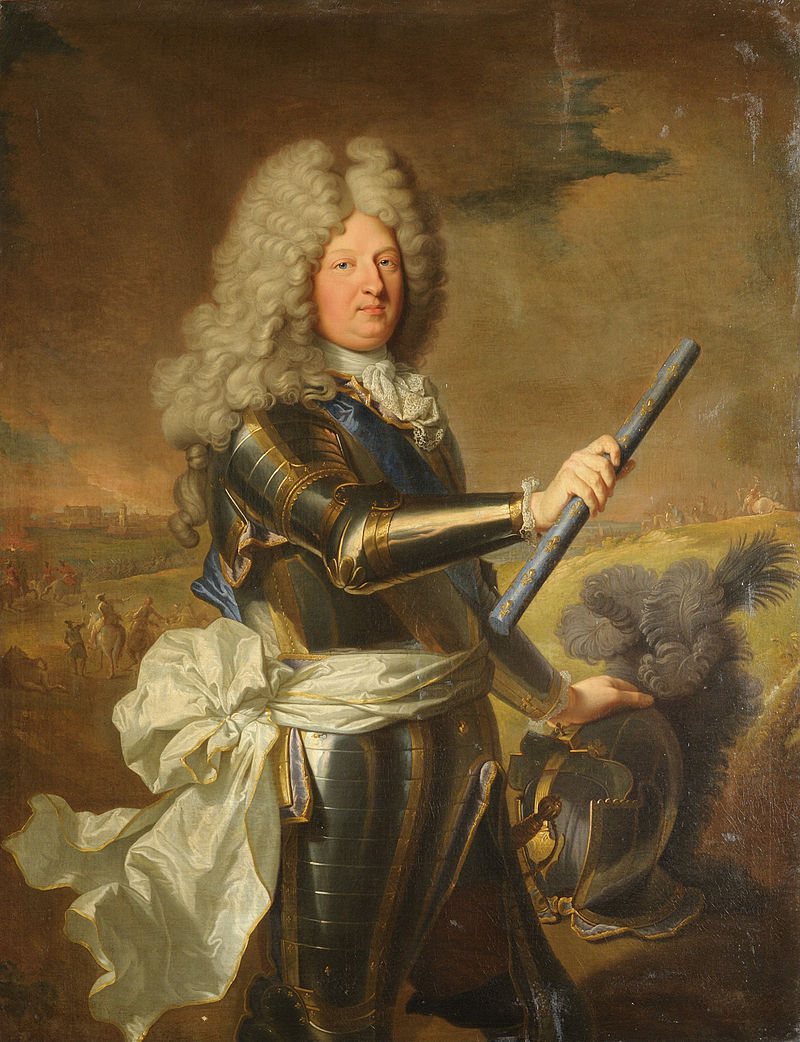Armand de Bourbon, Prince de Conti
Born in Paris on October 11 in 1629, to Henri II de Bourbon, Prince de Condé, and his wife Charlotte-Marguerite de Montmorency, Armand was a Prince du Sang and destined to become a man of the church.

His father Henri married Charlotte-Marguerite de Montmorency, daughter of Henri I de Montmorency, in 1609 and the couple had three children: Anne-Geneviève de Bourbon, born in 1619, married Henri II d’Orléans and thus became the Duchesse de Longueville. Their second child Louis de Bourbon, born in 1621, succeeded to the title of his father and became famous as le Grand Condé. Armand was their youngest son and plagued by health issues from his birth on.
He was weak, small and slightly hunchbacked. Thus, while his older brother Louis was meant to follow the footsteps of their father, Armand was prepared for a life in service of the church. Armand was baptised on 23 December in 1630 at Saint-Sulpice, with Cardinal Richelieu and Marie-Félicie des Ursins acting as godparents, and the title of Prince de Conti was revived for him. The title takes its name from Conty, a small town in northern France, and came into the Bourbon branch Condé with the marriage of Louis de Bourbon, the first Prince de Condé, and Eleanor de Roye in 1551. Their son François was given the title Marquis de Conti, which was later elevated to Prince de Conti and lapsed at his death in 1614, for François’ only child and heir died four years before him.
Armand became commendatory abbot of Saint-Denis on 12 December 1641. The following year, he was named Abbot of Cluny. He graduated with a master of the arts on 6 August in 1643 and received a bachelor’s degree in theology from the University of Bourges in 1646.
Henri II de Bourbon died the very same year, 1646, and Armand’s older brother, until then known as the Duc d’Enghien, became the new Prince de Condé. A couple of years later, all three of the siblings got involved in the Fronde.
Conti, along with his sister and brother-in-law the Duc de Longueville, sided with the Frondeurs and was named généralissime de la Fronde on 11 January 1649. As such he met his brother Condé, in charge of the royal troops, on the battlefield. Condé later joined the Frondeurs as well. Conti, Condé and Longueville were arrested on 6 January in 1650 at the Palais-Royal and imprisoned at Vincennes, then at Marcoussis and later at Le Havre.
Armand was very attached to his libertine sister Anne-Geneviève and being far and separated from her drove him nearly crazy. He tried all sort of things to make her ‘notice’ him, alchemy, potions and even magic, trying to contact her with the might of his thoughts. At the start of his imprisonment, Armand had a head wound. There are several stories how he got that, one says he injured himself with a spatula, an other says he silver torch in the air. Either way, this wound turned out to be fortunate for him, for it allowed him to see doctors and surgeons, of which some smuggled secret messages in and out of his cell.
Conti and Condé were released in February 1651, by then Fronde had become a proper mess. It was suggested that Armand should marry Charlotte-Marie de Lorraine, daughter of the Duc de Chevreuse and Marie de Rohan-Montbazon, but Condé and Anne-Geneviève opposed the marriage pact. Thus pretty much everyone turned against Condé. In the meanwhile, Armand sought refuge in Bordeaux, one of the last rebellious cities, and capitulated on 31 July in 1653. He was allowed to travel to his château de La Grange-des-Prés and settled there with a small court that accompanied him.
During his stay there, he meet a certain Jean-Baptiste Poquelin, better known as Molière. Conti took a liking to this Molière and acted as his patron. He also allowed him to name his troupe after him.

Armand was eager to return to the royal favour and managed to regain it quickly by agreeing to marry Anne-Marie Martinozzi, one of Cardinal Mazarin’s nieces. A scandal. Mazarin was rather pleased to see his family marry into the ranks of the Princes du Sang… the rest of the court not so much. They found it scandalous how the daughter of an Italian nothing was to be lifted to a rank that high. The marriage took place anyway and was celebrated at the Louvre on 22 February in 1654. The bride wore black and was covered all over with precious pearls. Cardinal Mazarin paid for it all.
It seems, Armand regretted his decision to marry a Cardinal niece pretty quickly… or perhaps he regretted the fact that he married at all. Talk had it, Anne-Geneviève was the reason for it. Conti distanced himself from his beautiful wife in a swift. By June 1654, he was back on the battlefield, in the name of the King this time, and only met his wife briefly in November. He spent much of the following year on leading the French forces in Spain, but had to take a rest in 1656. Armand had gotten himself a venereal disease and that changed his life completely.
It seems he contracted it during libertine adventures in 1653 and he considered penitence to be the best cure, thus renounced all merry activities and became very pious. Pious and being the patron of Molière doesn’t go together well, thus Monsieur Molière was told Conti did not wish for Molière’s troupe to display any connections to him anymore. Shortly after, Armand joined Jansenism.
Armand was named Grand maître de France in 1657 and put in charge of the Siege of Alessandria. As Gaston de France died in 1660, Armand was given an annual pension of 60000 livres and the government of Languedoc. His wife fell ill the same year and nearly died. She turned away from court afterwards and dedicated her life to the sick and poor. Armand and Anne-Geneviève joined her in this mission.
The Prince and Princesse de Conti had three children: their first child was born on 6 September in 1658 and baptised Louis de Bourbon, he died only eight days later. Their second child, born on 4 April in 1661, was baptised Louis-Armand de Bourbon and died childless in 1685. Their third son, was born on 30 April in 1664 and named François-Louis de Bourbon and became titular King of Poland in 1697.
Armand de Bourbon spent his last years devoted to his study and mysticism. He died on 21 February in 1666 and was buried at Chartreuse Notre-Dame-du-Val-de-Bénédiction. His bones were moved to Port-Royal des Champs in 1906.




